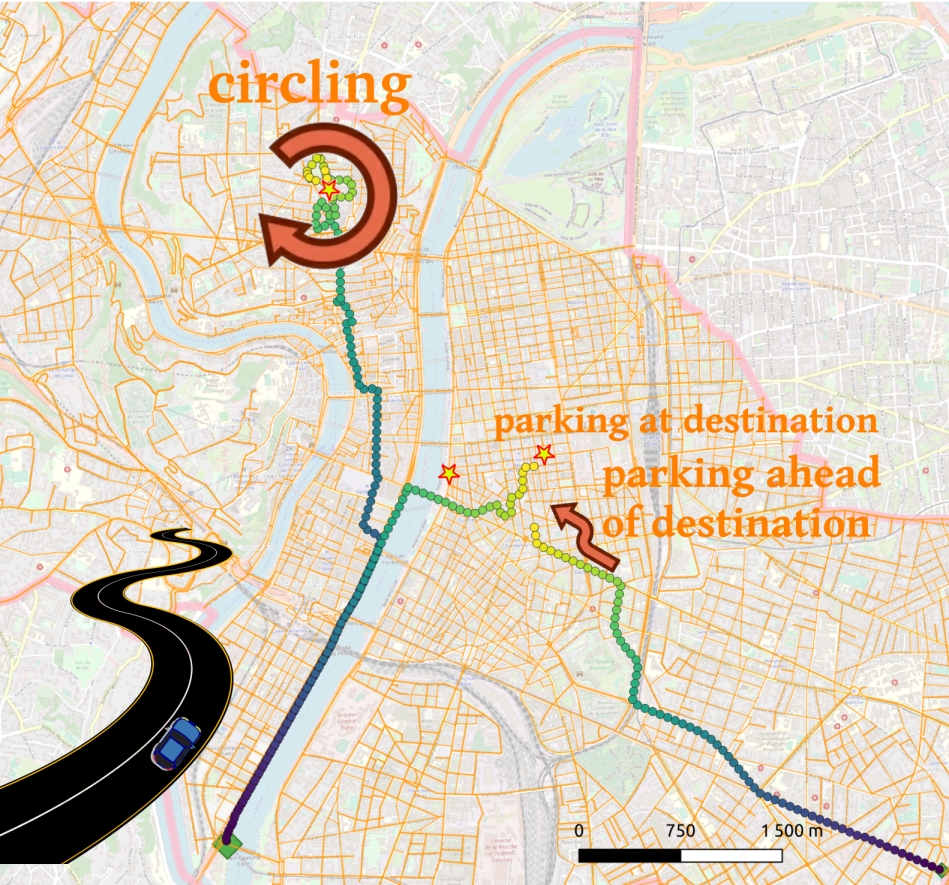
Physique statistique du stationnement
Nilankur Dutta, Thibault Charlottin et Alexandre Nicolas (équipe MMCI) ont publié un article intitulé "Parking search in the physical world: Calculating the search time by leveraging physical and graph theoretical methods" dans la revue Transportation Science.
Les véhicules, faits pour rouler, passent pourtant le plus clair de leur temps à l’arrêt. Pire, une partie significative de la circulation dans les métropoles est générée par la recherche d’une place où se garer ! Pourtant, les lois statistiques auxquelles obéit cette recherche de stationnement sont encore mal comprises. En particulier, le fort accroissement du temps de recherche bien avant la saturation des places posait question. Les chercheurs ont montré que, pour ce problème d’ingénierie du transport, l’import de méthodes d’autres disciplines, plus précisément de la physique statistique et de la théorie des graphes, se révélait redoutablement efficace, autant pour déterminer théoriquement les lois régissant le temps de recherche que pour simuler des cas concrets, en l’occurrence celui de la voirie lyonnaise.
Statistical physics of parking search
Nilankur Dutta, Thibault Charlottin et Alexandre Nicolas (MMCI team) published an article entitled "Parking search in the physical world: Calculating the search time by leveraging physical and graph theoretical methods" in the journal Transportation Science.Cars are designed to be driven, but spend most of their time parked. Worse still, a significant share of metropolitan traffic is caused by cars cruising for parking ! Despite the centrality of this problem in transport policies, the statistical laws governing parking search are only dimly understood. Even the origin of the major surge of the search time long before the global occupancy saturates was unclear. The researchers showed that, for this issue pertaining to transport science, an original transfer of methods from another field (namely, statistical physics and graph theory) was highly efficient. Benefits can be wreaped for the theoretical derivation of the laws governing the search time in a generic way, but also for the simulation of realistic case studies, here, the case of the City of Lyon.


















